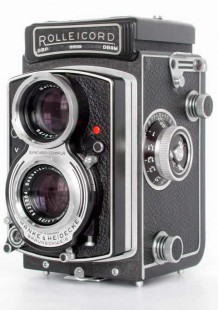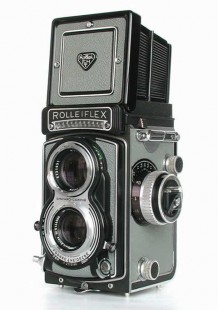My interest in photography began around 1946, soon after the end of WW2. I acquired or was given a box camera, I believe a Coronet, 8 on 120 film, which I soon obtained some film for, although this was still in short supply due to the war, probably Ilford Selochrome or Kodak Verichrome, or some other orthochromatic film, as I don’t think panchromatic was available at the time.
Anyway I purchased some developer and contact printing paper, a red lamp and off I went. All went well until the films went black all over as soon as they were introduced to light, well, nobody had told me that they needed fixing. Anyway a few inquiries at a local photographic shop and being given a small booklet by the helpful proprietor and I was bitten by the bug. I must now apologise for any errors that may occur in my tale, as you have probably realised by now that I am getting a bit long in the tooth and my memory might be lacking a few grey cells. A few? I hear you ask.
Well things now started getting serious and I realised that something better in the way of a camera was called for, so I managed to get a few coppers together and bought myself a pre war Zeiss Ikon Ikonta, again 8 on 120 roll film, which was a vast improvement from my box camera. Even if I could have afforded a new camera, it would have been impossible to obtain, as what few were being imported then were for professional users only.
Now the next big problem was an enlarger, contact prints were getting rather boring and anything I wanted printed larger meant a trip to my local photographic shop. This was of course a strain on the pocket as not a lot of money was left from the then meagre wages of the day, less 75% of which I gave to my mother, somewhat different now I believe. So to solve the enlarger problem I obtained an old Voigtlander folding camera for next to nothing, made for 129 film I think and with the aid of an empty National Dried Milk tin, some wood and a couple of sheets of glass from an old picture frame I had an enlarger. Believe it or not it actually worked, though the exposures were rather long as the maximum aperture was f 6.3 and the milk tin light box left a lot to be desired, but when you are young and keen you can put up with a lot.
I think my next acquisition was a Zeiss Super Ikonta 532/16 twelve, or was it eleven? on 120 film, pre-war of course, still no new cameras available, probably an ex-war correspondent issue, I believe they were used for this work. This camera served me well and was never any trouble although it had obviously been well used but in good mechanical order. A few years later, I am not sure quite when, possibly the early 1950’s MPP started producing the Microcord and later the Microflex of which I used both during those years. These of course were a copy, and not a bad one of the Rollei’s which then were still not available to the general public, also funds had improved which allowed the purchase of a real enlarger, no doubt not the best available but infinitely better than my home made effort.
Then later in the 1950’s new Rollei’s became available and I managed to purchase a grey Rolleiflex T which probably gave me more pleasure than someone buying a Ferrari today. I had that camera up to the 1970’s when I succumbed to the temptations of an SLR and part ex’ed my Rollei T to get it. This is something I remember being quite upset about, but more than one camera then was out of the question. My photographic interests meandered through several SLR’s and the usual lenses and accessories up to a few years ago when I passed a photographic shop and saw a nice Rollei T sitting on the shelf this I couldn’t resist and I bought it. That started the rot and I have since bought a Rolleicord Va (pictured). and a Rolleiflex 3.5 F.
Needless to say like many others now I have used digital cameras for the past few years and progressed to buying an SLR digital which gives me excellent results without too much trouble on the computer. The only thing that worries me is the longevity of the storage medium, of which much is being written, but as ever no positive solutions are forthcoming other than backing up your discs or whatever you are storing your pictures on every five minutes.
I recently had problems getting some pictures from a Kodak produced disc from 1999 which has been little used, looks in pristine condition and has been stored in a crystal case out of the light in a dry cool place, what more can you do? I think the article by Roger Hicks in the 5th August issue of Amateur Photographer says it all. Following on from this I recently got a box of old photo’s down from the loft, not the ideal place to store them, some of these were Rollei T pictures dating back to the 1950’s all of which were in excellent condition and looked good for another 100 years.
I wonder what my digital prints will be like after 60 years? So to help out on this problem, I sometimes load one of my Rollei’s with some monochrome film, take it out with me and suffer the odd look from some of the younger generation who probably expect me to put a black cloth over my head and wonder why I’m waving a mobile phone in front of me. Should I tell them it’s an exposure meter? I probably get more pleasure out of taking a dozen shots this way than putting 50 or a 100 on to a digital storage disc. After this I can spend a happy few hours in the wet darkroom and feel confident that when my children and great grandchildren drag these out in years to come they will still look like they did when I printed them. So then, after about 60 years interest in photography, I’m still learning, and like I said at the start I feel I’ve gone ‘Full Circle’.

